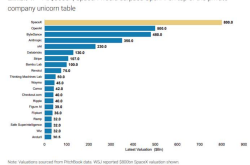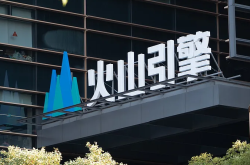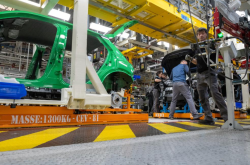Midway Through the First Year of Mass Production of Humanoid Robots: Unitree and Zhiyuan Herald the Emergence of the 'Third Player'
![]() 07/18 2025
07/18 2025
![]() 566
566
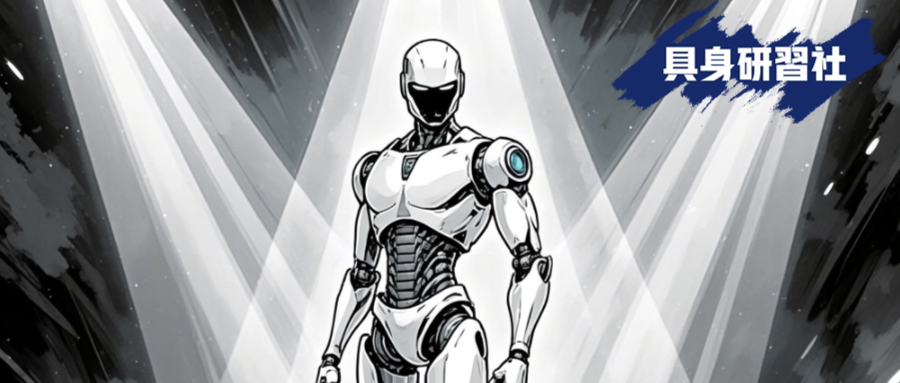
The humanoid robot industry stands at a pivotal juncture, transitioning from technological breakthroughs to commercial validation. This period of parallel exploration underscores the authenticity and complexity of market demand, fostering the overcoming of technological bottlenecks and the reduction of cost curves. This seemingly 'savage' growth is in fact an inevitable process of the industrial ecosystem refining optimal solutions through dynamic trial and error.
Editor: Di Xintong
Looking back, the phrase 'first year of mass production' that raised eyebrows at the start of the year is now being validated by real orders.
As Unitree and Zhiyuan jointly secure orders exceeding hundreds of millions of yuan, Zhongqing delivers thousands of units, and Legedoo reaches the point of 'delivery upon production' due to overwhelming demand, the industry landscape has quietly transformed. Humanoid robot companies are no longer confined to laboratory research and market expansion struggles; their focus has shifted to rapidly scaling production capacity to meet surging demand.
Jiang Zheyuan, founder of Songyan Power, informed the Embodied Learning Community that current order volume has surpassed 2,500 units, while Galaxy General has also announced orders from 100 stores.
The dawn of commercialization brings light to the industry's potential for 'self-sufficiency', yet this light does not shine universally. In the ontology track, as the landscape clarifies, the Matthew Effect becomes increasingly pronounced: Unitree and Zhiyuan, at the forefront, hold ample orders, while many mid-tier companies struggle with order volumes in the double or even single digits.
Even within the leading camp, development paths diverge significantly: Some companies adhere to an end-game mindset, deepening their focus on 'general-purpose' humanoid robots, pursuing a single product platform to cover the broadest potential demand. Others adopt a 'laying eggs along the way' strategy, prioritizing customization for specific scenarios or major customers, achieving commercialization through rapid iteration, and gradually approaching their ultimate goal.
The underlying logic behind these commercial paths revolves around the debate on the commercial essence of humanoid robots: Are they standardized 'standard products' capable of mass production, or 'non-standard products' requiring deep customization to maximize their value? The former aims to satisfy multiple scenarios with a single hit product, while the latter unleashes productivity potential through customized solutions, even if it raises per-delivery costs.
This divergence reflects companies' strategic positioning and core capability-building choices. It is both a process of natural market selection and a necessary path for the industrial ecosystem's maturity.
While we cannot predict the success of any company, current commercialization keywords offer a glimpse into the future.
The First Tier Takes Shape
The 'Third Player' is on the Horizon
Whether through technological leadership or growing order volumes, Unitree and Zhiyuan have firmly established themselves in the 'first tier' of humanoid robots. This leadership accelerates a positive cycle: End-customers increasingly prefer top products with market validation and brand recognition, reinforcing the industry trend of 'the strong getting stronger'.
Especially after leasing companies purchased Unitree robots, they became 'traffic generators'. To boost their leasing business, they constantly innovate robot utilization. It's no longer unusual to see robots 'entertaining'; robot rappers and short dramas are even more eye-catching. As social media fills with Unitree robot videos, leasing companies' keen sense of traffic has fully opened up the C-end market for Unitree.
The name Unitree is now a gold trim on humanoid robots, making everyone who sees it stop and take a second look.
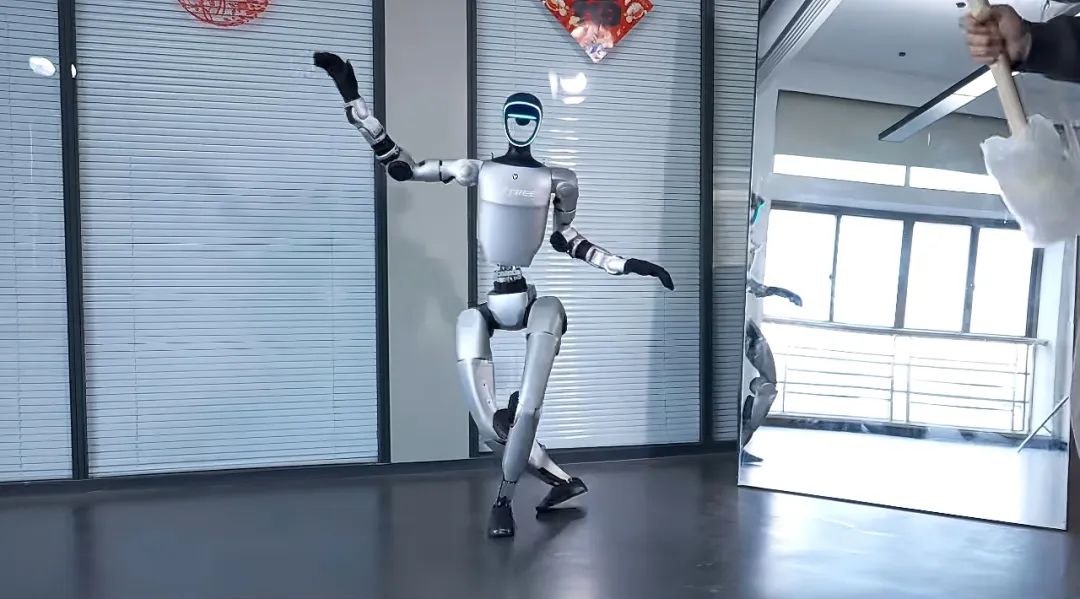
Image source: Unitree Technology
With a traffic-bolstered technological foundation, Unitree's orders reflect this intuitively. In March 2025, Unitree secured an order for 10 humanoid robots from Tongji University, worth 8.25 million yuan. After the CES 2025 exhibition, it obtained a procurement agreement for hundreds of quadruped robots from a US warehousing and logistics company. Additionally, Unitree won a 46.05 million yuan bid from a China Mobile subsidiary, including small-sized humanoid bipedal robots, computing backpacks, and dexterous five-fingered hands...
While Unitree has not disclosed its total order volume for the year, the Embodied Learning Community confirms it is one of the few humanoid robot companies with real C-end orders.
Notably, traffic is merely the 'icing on the cake' for Unitree's commercialization. As early as 2024, before becoming a sensation, Unitree's annual revenue had already reached 1 billion yuan, and investors state that it has been profitable for consecutive years.
Unlike Unitree, which relies on robot traffic, Zhiyuan brings its own. The founder's prodigious teenager label is deeply etched in industry insiders' and the public's minds. Moreover, Zhiyuan is not just about this 'live signboard'; whether it's the brain-side and PI cooperation breakthrough in complex long-range movements, the wheeled and bipedal hybrid new product, or the Lingxi X2 focused on 'interaction', all indicate Zhiyuan's 'product strength'.
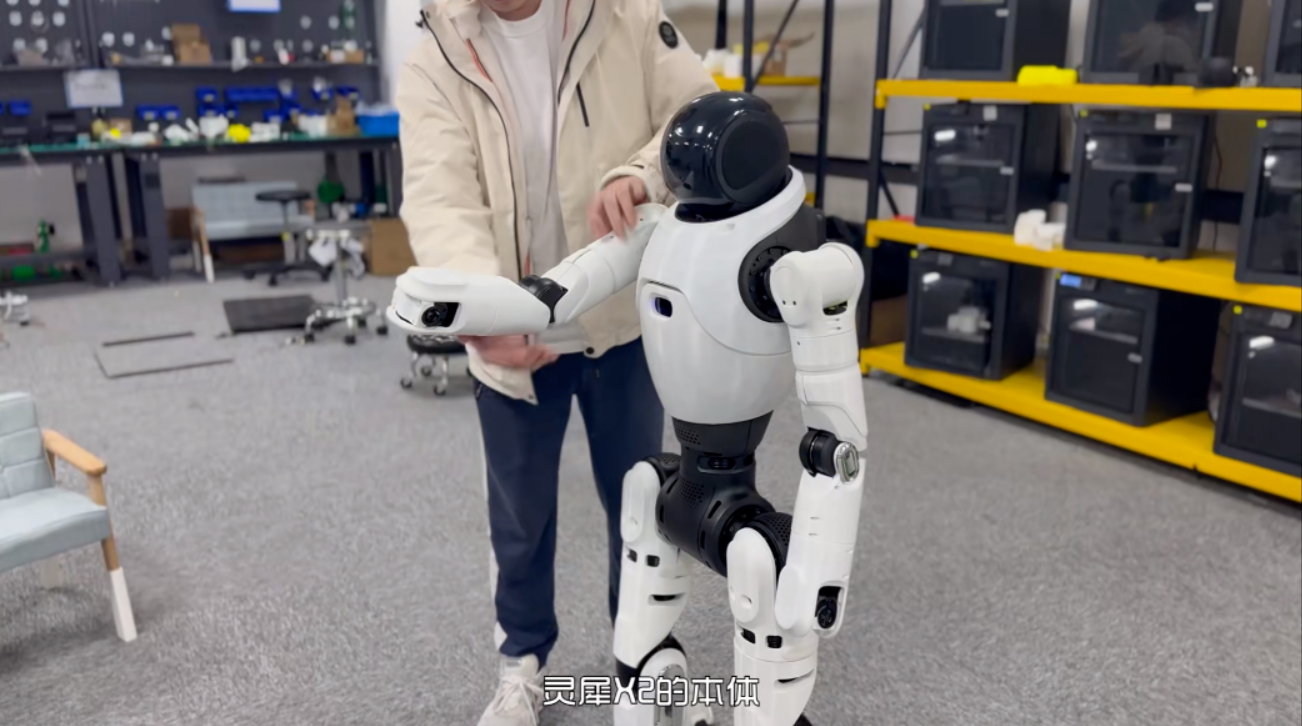
Image source: Zhiyuan
In July alone, Zhiyuan frequently announced successful bids, including winning the Zhuhai Embodied Intelligence Application Innovation Center's data acquisition and performance robot procurement project worth 12.7362 million yuan, and a 'full-size humanoid bipedal robot' package under a China Mobile subsidiary with a bid price of 78 million yuan.
Unitree and Zhiyuan prove that humanoid robot ontology track commercialization requires technological foundations combined with 'visibility'. This approach is key to achieving 'self-sufficiency' and maintaining a leading position. Humanoid robots need continuous real-world scenario data. Companies that deliver first have the initiative in scenario data, better nurturing next-generation product technology, thereby forming a virtuous development cycle.
As these two companies rush ahead, they leave a trail of the 'Matthew Effect' for other players. Without swift fame, they may be permanently outpaced.
At this juncture, the 'third player' in the humanoid robot industry is on the horizon.
Some companies aim to replicate Unitree's traffic success, never looking back from finding new robot utilization methods. Others hone technological differentiation, hoping to break through. Still, others strongly bind with specific scenarios, forming a small-scale mindset. There are also those aiming for comprehensiveness, validating in multiple scenarios, and cultivating a 'polygon warrior'.
Despite the industry's lively chase, there is no definitive 'third player' (evaluation criteria are multi-dimensional, encompassing technology and commercialization). The Embodied Learning Community has learned from multiple industry sources that several popular candidates exist, each with their strengths.
An undeniable fact is that commercialization has become an industry landscape 'turning point'. Grasping this turning point requires technology, orders, and traffic. Planting the anchor of intention can leverage long-term benefits.
Three-Tier Differentiation in Commercialization Routes
Commercialization has become an industry development imperative, with differing views on the key path choices to solve this.
At the hierarchical level, top-level path differentiation lies in the two major scenarios of commercial and industrial applications. The 'factory faction' believes humanoid robots are more suited to industrial scenarios due to real labor shortages, rigid demand maximizing productivity value, and imaginable future commercialization scale. Moreover, factories' structured environments and standardized processes are more suitable for current humanoid robot technological levels, allowing real-scenario use and iteration.
Conversely, the 'commercial faction' argues that factory automation standards are mature, with machine-replaceable workflows deployed for years. Unautomated workflows involve complex operations unsuitable for current humanoid robots. Factories have low tolerance rates, with higher post-delivery operation, maintenance, and trust costs. In contrast, commercial scenarios have higher inclusivity, facing unstructured and dynamic scenarios requiring strong obstacle avoidance capabilities but relatively standardized demand instructions, setting a lower technical threshold overall.
For example, Wang Qian of the Independent Variable Robot once stated that factory scenarios avoid the model's strengths, while the service industry is open with complex long-sequence tasks. Complex scenarios truly promote model capability improvement and address genuine customer needs, where users are willing to pay for robots to replace humans in undesired tasks.
While the two factions have different focuses, they explore the same logic: truly utilizing humanoid robots.
With similar underlying logic and clear goal orientation, route differentiation becomes secondary. Instead, both factions' efforts continuously expand the track's landing boundaries.
Under scenario choice, the next divergent path is product logic. Some companies adopt the 'laying eggs along the way' approach, encompassing products, scenarios, and technology. Current products and scenarios may not be ultimate goals but the most suitable money-making routes. By starting first and storing real data, proven technology, and orders, companies can refine new products to achieve ultimate general skills and household penetration. Others directly enter the endgame, deeply embedding themselves in the final battlefield through a single product, iterating within the final scenario.
The most basic and critical differentiation currently affecting future direction is the 'standard product debate'.
Some companies believe humanoid robots should be standardized products, using technology to meet general demands and satisfy most scenarios. Others advocate a standardization combined with customization model, tailoring product functions to scenarios and customer demands. For example, low-precision operations can use a two-finger gripper, while higher precision requires a dexterous five-fingered hand; battery life can be chosen based on operation intensity.
The 'standard' vs. 'non-standard' debate revolves around returning to application scenarios' essential attributes. Standardized products, with scale effects and cost advantages, suit homogeneous demand in commercial service areas. In contrast, industrial manufacturing scenarios, characterized by highly differentiated production lines, clear customization needs, and strong customer payment capabilities, often become ideal testing grounds for 'standard platform + deep customization' solutions, achieving optimal application efficiency and value release.
In short, there is no optimal solution, only the most suitable one.
The three-tier differentiation highlights that while the industry's commercialization is still in a robust growth phase, it is neither disorganized nor haphazard. Instead, it represents a necessary precursor to industry maturity. At various levels and dimensions, path choices essentially reflect differentiated responses to the central question of "how to most effectively translate technology into user value," grounded in each company's unique endowments, technological reserves, and market assessments. The 'rigid demand' and 'structured environment' of industrial scenarios form a solid foundation for technological validation and value realization. Meanwhile, the 'inclusiveness' and 'relatively standardized demand' of commercial services pave unique avenues for early-stage scaling and user education. The strategy of 'laying eggs along the way' amasses invaluable combat experience and survival capital, whereas the 'endgame mindset' directs the ultimate trajectory of technological innovation. The debate between 'standard' and 'non-standard' will ultimately find its optimal equilibrium under the guidance of scenario adaptation, with a standardized core platform ensuring efficiency and cost-effectiveness, while scenario-specific customization modules unlock profound value.
Overall, the humanoid robot industry is currently navigating a pivotal period, transitioning from technological breakthroughs to commercial validation. The concurrent exploration of diverse pathways not only underscores the authenticity and complexity of market demands but also accelerates the resolution of technological bottlenecks and the flattening of cost curves at the practical level. This seemingly 'savage' growth is, in fact, an inevitable process within the industrial ecosystem, as it seeks optimal solutions through dynamic trial and error.

